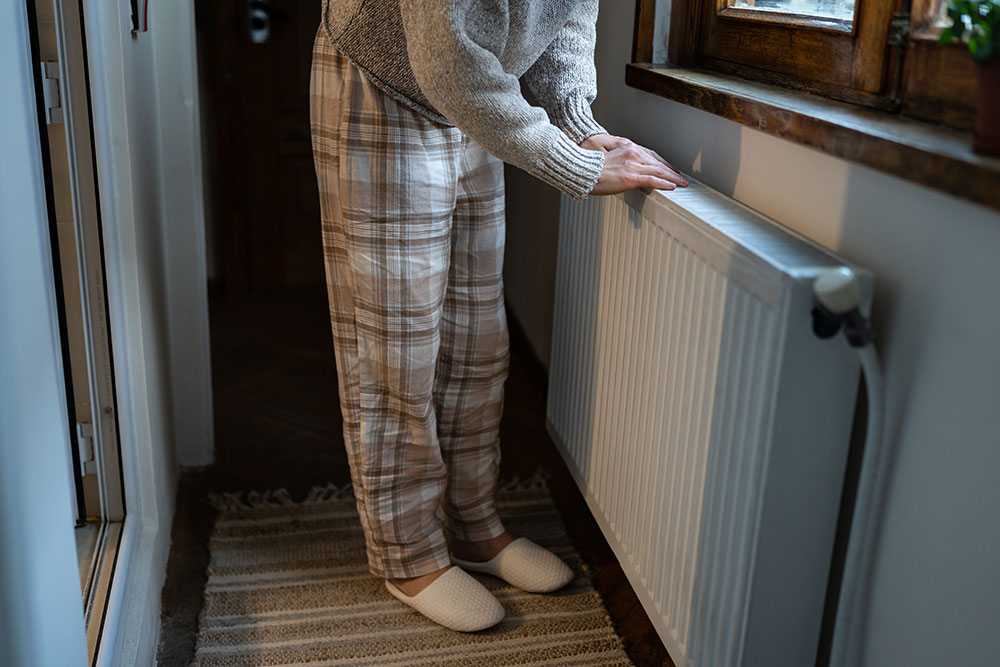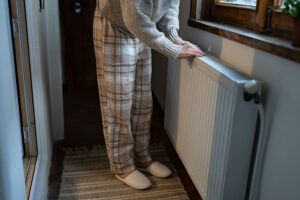If your heating bills are higher than usual or your tank is empty faster than expected, your heating oil might be going to waste. Wasted heating oil doesn’t just raise your costs—it also adds to environmental problems and puts extra wear on your heating equipment. Paying attention to your system’s condition can help you spot trouble early and save money.
Some of the most common warning signs are easy to miss. Watch out for leaks, unusual odors, longer heating times, or visible damage to your oil tank. Spotting these issues quickly helps keep your home warm, lowers your expenses, and reduces your impact on the planet.
Unusual Increases in Heating Oil Consumption
A steady rise in heating oil usage can sneak up on any homeowner. You may expect to use more oil in colder months, but when your tank seems to empty faster than ever—despite regular habits or outside temperatures—it’s a clear signal that something isn’t right. Unexpected spikes can drain your wallet and leave you troubleshooting in the dead of winter. Paying attention to your oil tank gauge, past receipts, and weather patterns helps you catch small problems before they get bigger.
Monitoring Your Oil Tank Gauge and Receipts
Regularly keeping an eye on your oil tank gauge is one of the simplest steps you can take to spot waste. Most tanks have a float or dial type gauge on top that shows how much oil remains. Take a quick glance every week—and after big temperature swings. If your tank is fitted with a digital or smart tank monitor, check the data on your phone app for up-to-date numbers.
 Photo by Akashni Weimers
Photo by Akashni Weimers
For accurate tracking:
- Compare current gauge readings with old ones at the same point each week or month.
- Keep your delivery receipts and jot down the gallons delivered and date.
- Review several months’ worth of data to spot changes. If you notice you’re burning through oil faster—even when it’s not much colder—it’s time to look for leaks, an inefficient system, or other waste.
A smart oil gauge takes the guesswork out and sends alerts if you use oil quicker than normal. These tech solutions help spot leaks or short cycling (when your system starts and stops too often), both of which eat up fuel and dollars.
Identifying Patterns Unaffected by Weather
Not all increases in oil consumption are caused by cold snaps or more time at home. Some spikes hint at hidden problems inside the house.
Look for signs outside of weather and lifestyle:
- Your oil use keeps rising even when the outside temperature hasn’t dropped.
- You notice large drops in the gauge’s level after a refill, but the weather is mild.
- Fuel bills seem high for the season compared to last year or similar weather.
Make it a habit to:
- Cross-check thermostat settings, indoor habits, and recent weather data.
- Rule out extra guests or family staying at home more (which naturally boosts heating needs).
- Notice if your system is running longer or seems to turn off and on more than usual.
- Listen for new sounds from the boiler or furnace.
- Check for drafts, open windows, or insulation gaps you may have missed.
Steady or rising oil usage without a clear cause can point to failing parts, leaks in the system, clogged filters, or even thermostat or gauge problems. Early recognition means you can schedule a tune-up, fix the issue, and keep more cash in your pocket.
Signs of System Inefficiency and Poor Maintenance
When your heating oil system isn’t running as smoothly as it should, wasted fuel and higher bills often follow. Paying attention to a few key warnings can help you spot system trouble early, prevent waste, and keep your home comfortable without burning extra cash. Recognizing the signs of inefficiency and poor maintenance saves you from unexpected breakdowns and cold nights.
Unusual Noises and Smells from Heating Equipment
Odd sounds or new smells coming from your furnace or boiler are never a good sign. Well-maintained heating systems operate quietly and should have almost no noticeable odor.
- Strange noises: Banging, clanking, whining, or rattling may signal loose parts, worn belts, or a failing blower motor. Left unchecked, these sounds can mean a small issue that turns into an expensive fix—or a full system replacement.
- Unusual odors: Smelling oil, burning, or a musty scent near your system can indicate a fuel leak, electrical problem, or even mildew from excess moisture. A rotten egg smell is especially serious and may point to a dangerous fuel or exhaust problem.
If you’re picking up on these symptoms, they’re your warning flags. Ignoring them means risking more than just comfort—it can lead to unsafe conditions and bigger repair bills.
Rooms Taking Long to Heat or Uneven Temperatures
Does it feel like you’re always waiting for warmth, or do certain areas in your home stay chilly while others are much warmer? These are classic signs your heating system isn’t running efficiently.
- Longer warm-up times: When your furnace or boiler is sluggish, it may be burning more oil than necessary just to reach the set temperature. Clogged filters, aging components, or failing thermostats often cause longer cycles.
- Uneven heating: Hot and cold spots throughout your home usually mean air isn’t moving freely or the system can’t keep up. Possible culprits include blocked vents, dirty ductwork, struggling blowers, or poor insulation.
Poor airflow and heating delays make your equipment work overtime, eating up oil and leaving you less comfortable day-to-day.

Photo by Skylar Kang
Soot, Black Residues, or Excessive Smoke
Visual clues around your heating system are impossible to ignore and are clear signs something’s wrong with combustion.
- Soot buildup: Black streaks or powder near vents, registers, or the system itself often mean the burner isn’t mixing fuel and air properly. This wastes oil and can dirty your home.
- Excessive smoke: White or black smoke coming from your exhaust, chimney, or around the boiler isn’t normal. It points to incomplete burning of fuel—usually from a dirty burner, blocked flue, or failing parts.
- Oily or sticky residue: Black, oily spots near the furnace or on walls/ceilings hint at oil leaks or burner misfires.
These symptoms often mean your system is producing more pollutants and making the air in your home less healthy. If you spot these, turn off your heating equipment and call a technician right away to prevent further waste and risk.
By keeping an eye and ear out for these red flags, you’ll catch problems early and protect both your wallet and your family’s comfort.
Physical Indicators of Oil Leaks and Tank Problems
Heating oil waste often hides in plain sight. By getting familiar with what trouble looks (and smells) like, you can stop leaks before they drain your budget and endanger your home. Below are common warning signs your tank or system may be leaking oil or building up serious issues.
Visible Rust, Bubbling Paint, or Wet Spots on Tank
 Photo by Tom Fisk
Photo by Tom Fisk
The outside of your oil tank can tell you a lot about its health. Look closely for:
- Rust patches: These signals that moisture has broken through the protective layer and may be eating away at the metal underneath. Once rust gets in, the risk of leaks goes up fast.
- Bubbling or blistered paint: This is a red flag that oil has already found a way through and is pushing from beneath the tank’s surface. Bubbling paint is often an early sign before actual oil seeps out.
- Wet or oily spots: Any dampness, especially under or along the seams, means the tank is either “weeping” oil or already leaking. These spots may look shiny, sticky, or dark depending on lighting and temperature.
A healthy tank surface should be dry and free from peeling, rust, or any fluid spots. If you see even a small stain, don’t ignore it—today’s stain is often tomorrow’s full-blown leak.
Oil Odors Around Tank, Pipes, or Burner
That sharp, diesel-like smell near your tank or pipes isn’t normal. Strong oil odors are a classic symptom that oil vapors are escaping—sometimes from cracks, loose fittings, or leaks you can’t see as well as those you can.
Take note if you ever notice:
- Persistent oily smell in your basement, near the tank, or in places where pipes run.
- Sudden change in air quality around the boiler, furnace, or tank. A new or stronger smell means something has changed, usually not for the better.
Trust your nose. If you’re picking up on odors, oil is making its way outside the tank before it burns in your system. Quick action protects your air, your wallet, and your property.
Unexplained Oil Stains or Puddles Indoors or Outdoors
Coming across a dark stain or small puddle near your tank, lines, or even along your property’s perimeter tells you oil has already left its intended track.
Keep an eye out for:
- Sticky dark stains under the tank or on surrounding floor. These are often the first clue to a slow leak.
- Puddles beside or beneath outdoor tanks. Even a small pool, especially after dry weather, is never a good sign.
- Oil streaks or drip marks on walls, foundation, or around pipe entry points.
Inside or out, any unexplained staining should prompt you to stop using your heating system and call a professional. Even a minor leak will only get worse with time—and fixing early is far cheaper than dealing with cleanup or tank replacement later.
Spotting these physical signs early puts you ahead of major heating oil waste and helps you avoid a headache down the road.
Common Causes of Heating Oil Wastage
Heating oil isn’t cheap, so it stings when you realize some of it is getting wasted before it even heats your home. Most oil loss comes from hidden problems that build up over time. By knowing what commonly goes wrong—inside your tank and throughout your heating system—you’ll be ready to catch issues fast, spend less on fuel, and keep your home running right.
Sludge and Sediment Buildup in the Tank
Sludge and sediment are enemies of any heating oil tank. Over months and years, tiny bits of rust from the tank walls, dirt from fuel deliveries, and even dead microbes settle at the bottom. When water sneaks into the tank—usually from condensation—microbes thrive, eating oil and turning it into thick, dark sludge.
Why is this such a problem?
- Clogged filters and lines: Sludge gets sucked up when oil runs low and clogs the filters. This makes your burner work harder and burn more oil than needed.
- Reduced efficiency: With blocked filters, less oil reaches the burner. The system fires up more often, wasting even more fuel with each short cycle.
- Potential system damage: Over time, poor flow can cause the burner to fail and might mean needing expensive repairs.
A tank filled with sludge doesn’t stand a chance at running efficiently. The best fix is a professional tank cleaning every few years, especially if your tank is more than 20 years old or you notice frequent filter clogs. Regular annual maintenance and adding sludge-busting additives can stop problems before they start.
Water Intrusion and Condensation Issues
Water and oil don’t mix, and even a little water is bad news. Water gets into tanks from outdoor humidity, rain seeping in through small breaches, or the simple process of condensation—especially when tanks aren’t kept full during the off-season.
Why does water in your tank matter?
- Microbial growth: Water helps bacteria flourish, creating more sludge and corrosion.
- Rust and corrosion: Metal tanks corrode faster from inside out when exposed to moisture, shortening their lifespan and risking leaks.
- System blockages: Water turns sludge into a sticky mess that gets drawn into fuel lines.
Signs you might have water issues include tank “sweating,” sudden filter clogs after a refill, and poor system performance. A pro can check your tank for water and remove it safely. Keeping your tank full in summer and checking for simple leaks around the fill cap also help cut down on condensation problems.
Drafts, Poor Insulation, or HVAC Leaks
Not all heating oil waste starts in your tank or boiler—sometimes your house simply can’t keep the heat in. Drafty older homes, thin attic insulation, or leaks in the ductwork push your system to run longer and burn more fuel.
Common culprits include:
- Old windows, doors, or unsealed gaps: Allowing cold air inside and warm air out.
- Thin or missing insulation in the attic, walls, or floors: Losing heat faster than your boiler can replace it.
- Leaky air ducts: In forced-air systems, leaks can send heat into unused spaces like crawlspaces or attics.
To spot problems:
- Feel around door and window edges for cold spots.
- Check for temperature swings in different rooms.
- If you see higher bills but still feel chilly, you likely have a heat loss problem.
A home energy audit can pinpoint leaks and insulation gaps. Simple fixes like weatherstripping, caulking, and adding insulation pay off fast—helping you save oil and feel warmer all winter.

Photo by Jakub Pabis
Detecting and Preventing Heating Oil Waste
Spotting wasted heating oil can feel like finding pennies slipping through a hole in your pocket—small leaks, ignored noises, or old equipment can all add up to big losses. Making a few smart choices and paying attention to simple routines is the best way to hold onto your heating dollars and protect your system. These steps aren’t complicated, but they can save you stress, money, and frustration through the cold season.
Routine Inspection and Professional Maintenance
 Photo by Pavel Danilyuk
Photo by Pavel Danilyuk
Regular maintenance is your heating oil system’s best insurance policy. Forgetting annual inspections often leads to clogged filters, hidden leaks, and wasted oil.
- Book a professional service visit at least once a year. A technician checks for leaks, inspects combustion, and swaps dirty filters.
- Change oil and air filters before each heating season, or when you notice extra noise or slow heating.
- Take five minutes once a month to look for rust, damp spots, or streaks on and around your tank.
- Don’t pile storage, boxes, or tools against your furnace—good airflow keeps your system happy.
These simple habits make your system more reliable and help catch small problems before they become breakdowns.
Upgrading to Efficient Heating System or Tank
Old systems burn through oil like a car stuck in first gear. Upgrades might cost upfront, but they pay back in lower oil bills and better comfort.
- Swap any system over 20 years old for a new high-efficiency model (look for 90%+ Annual Fuel Utilization Efficiency, or AFUE ratings).
- Consider modern double-walled or lined tanks, which prevent leaks far better than rusty steel tanks from decades past.
- If a full upgrade is not an option, ask your tech about tune-ups like burner replacements or sensor calibrations that can still improve efficiency.
A new setup can cut your oil use by up to one-third while making your home quieter and more comfortable.
Using Oil Additives and Water-Absorbing Filters
Even when you buy the cleanest heating oil, tanks collect water and form sludge at the bottom—bad for fuel flow and efficiency. Simple preventive steps keep your oil flowing like it should.
- Use approved fuel additives in your tank to break down sludge and help oil burn cleaner.
- Ask your technician to install water-absorbing filters or treat filters if moisture is a recurring problem.
- Keep your tank as full as possible during warmer months to cut down on condensation inside the tank.
These solutions are fast, inexpensive, and protect both your fuel and your equipment from long-term damage.
Implementing Tank Monitoring Technologies
Today’s tank monitoring tools are like fitness trackers for your heating oil. Smart monitors and wireless sensors keep an eye on oil use and detect leaks early.
- Install a WiFi-enabled tank monitor to track fuel levels from an app on your phone, making reordering and leak detection simple.
- Set up alerts for sudden drops in oil levels, which usually mean leaks or delivery mistakes.
- Review weekly and monthly consumption reports to spot unusual patterns right away.
Smart tech brings peace of mind, cuts down on guesswork, and puts you in control of both your comfort and your budget.
Conclusion
Catching signs that your home is wasting heating oil pays off—saving you money, protecting your equipment, and helping the environment. Regular checks on your tank, heating system, and indoor comfort make a real difference. Quick action on leaks, odd smells, or rising oil use keeps problems small and repairs simple.
Scheduling annual maintenance, keeping records, and upgrading old systems help your oil last longer. Small habits add up and stretch your heating budget. Less wasted oil also means fewer emissions, which is good for everyone.
Thanks for reading and caring about how your home runs. If you’ve spotted any warning signs or have tips to share, join the conversation below and let’s help each other stay warm and efficient.





